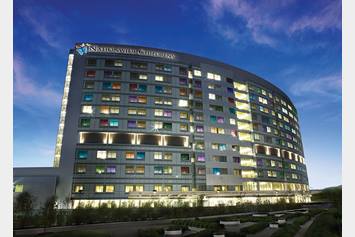Langerhan Cell Histiocytosis (LCH)
Langerhans Cell Histiocytosis (LCH) is among a rare and diverse group of disorders affecting primarily children.
About Nationwide Children's Hospital
Currently, one in every 330 children in the United States develops cancer before the age of 19. Progress in the development of effective new treatments and cures for childhood cancer has been spectacular during the past three decades, but progress is beginning to plateau. Most children now can be cured if they are treated at childhood cancer treatment and research centers by teams of experts in childhood cancer.
As one of the nation’s largest cancer treatment and research centers, Nationwide Children's is leading the fight against childhood cancer, determined to beat it in all its forms. The Cancer Center at Nationwide Children's Hospital provides comprehensive, multidisciplinary diagnosis, treatment and long-term management for pediatric and adolescent patients with any type of cancer.
About Your Langerhans Cell Histiocytosis Diagnosis
Langerhans Cell Histiocytosis (LCH) is among a rare and diverse group of disorders affecting primarily children. Although it was first described more than a century ago, much remains to be discovered about the causes of LCH. LCH was previously known as HIstiocytosis-X, with the terms eosinophilic granuloma, Hand-Schuller-Christian disease, and Letterer-Siwe disease applied to various forms of the disease.
The presentation of LCH is variable. Localized disease may include “punched-out” lesions of the bones, skin rash often confused with eczema, or lymph node enlargement. The bony lesions are commonly in the flat bones such as the skull, long bones of the arms and legs, and ribs. Some patients may have chronic ear infections or discharge. Systemic disease is characterized by internal organ involvement which may include the liver, spleen, lungs, bone marrow, gastrointestinal tract or masses behind the eyes. The systemic form of LCH is seen most commonly in infants and children less than 2 years of age.
A diagnosis of LCH can only be made following a biopsy and microscopic examination of the affected tissue. To determine the extent of the disease and the best treatment plan, several other tests will be required. These may include X-rays of the chest and bones (called a bone or skeletal survey), CT scans and bone scan. Laboratory studies of the blood will be required to determine involvement of the bone marrow and liver. A bone marrow biopsy is sometimes performed.
Treatment Outcomes
Treatment depends upon the individual patient. In most cases, the disease would likely heal by itself without treatment. Thus, the goal of any therapy is to prevent irreversible damage to normal tissue by the LCH lesions before they have a chance to spontaneously resolve. Solitary lesions may be treated with surgery alone if the lesion can be completely removed. Chemotherapy and/or small doses of radiation may be prescribed, depending on the extent of the disease.



